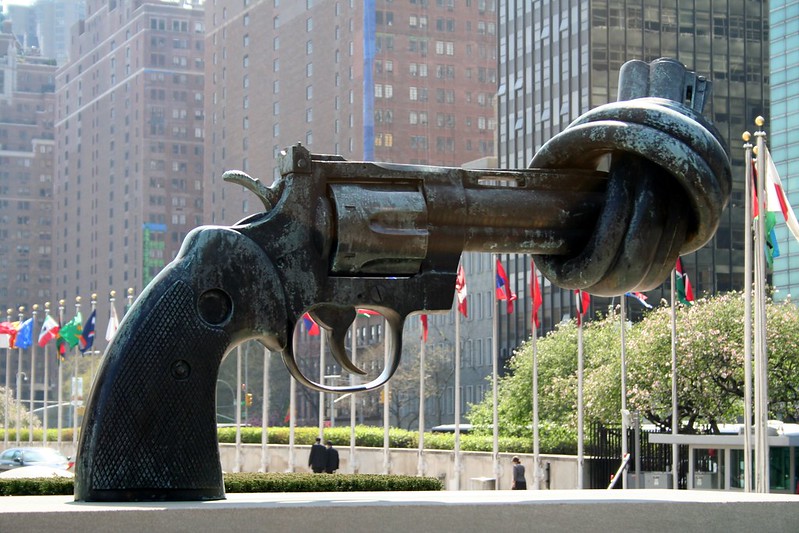The 8th Biennial Meeting of States of the UN Programme of Action (UN PoA) on Small Arms and Light Weapons convened today at the UN headquarters in New York City. This 2001 international agreement’s overarching goal was to reduce human suffering. Over two decades later, the goal has not been realized. Health effects of the horrific gun violence that continues worldwide ranges from death to physical injury to mental and emotional consequences that can last a lifetime.
IPPNW has advocated for decades that gun violence is a public health crisis, not just a police and security issue. We submitted the following statement to be delivered to States Parties of the UN PoA:
International Physicians for the Prevention of Nuclear War (IPPNW) statement to the UN PoA 8th Biennial Meeting of States on Small Arms and Light Weapons.
IPPNW is a non-partisan federation of national medical groups in 55 countries representing tens of thousands of health professionals who share the common goal of preventing nuclear and armed violence. We urge delegates to the BMS 8 to understand and accept that small arms violence is a preventable public health crisis as determined by the World Health Organization. Limiting access to guns, and stemming the illegal gun trade, are two preventable measures. Another is reducing demand for guns.
We know that during policy debates and legal negotiations that the human face of gun violence can be lost. As our doctors who have treated gun violence survivors have testified to this body for the past twenty years, they never forget those faces.
One of our doctors who worked in New York City often heard from patients about how their lives and the lives of their families were changed by gun violence. The injuries affected their ability to work and function in society, often both physically and mentally. Gunshot survivors have an increased risk of mental illness, including depression, Post-Traumatic Stress Disorder, suicide and substance abuse disorders. The risk of developing or worsening chronic illnesses such as heart disease increases due to the stress of recovery. Intimate partner violence, coupled with guns, poses an even more significant risk to the health and well-being of women and men. Survivors of intimate partner violence have higher rates of at-risk pregnancies and sexually-transmitted diseases.
To many worldwide, the threat of gun violence has become a “way of life.” Living in this culture of fear can lead to negative health effects similar to those who have sustained a gunshot wound. The most important aspect of gun violence that should never be forgotten is that every case is a face, a family, and a community, and sadly, a long journey of rehabilitation and significant expense, from the individual to the government levels.
But gun violence can be prevented.
By looking at gun violence as a public health issue, we can use the tools that we have already successfully used to combat public health threats such as polio and smallpox, by identifying the problem and its impact on society, its risk factors, and developing interventions, policies and programs aimed at targeting those risk factors.
The PoA explicitly calls for simultaneously approaching the small arms issue from both the supply and demand perspectives. A major driver of demand for weapons is an individual’s perception of security within his or her environment. Highly violent communities are therefore not just the central concern of the PoA, they are the environments which must be made less violent in order to reduce demand for small arms.
Arms control measures need to be part of a wider spectrum of policy solutions – intersecting security, crime, human rights, health, and development. As such, healthcare professionals and policymakers can be powerful allies in armed violence prevention worldwide.










